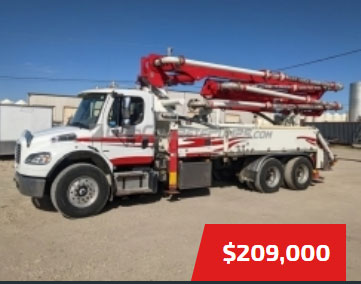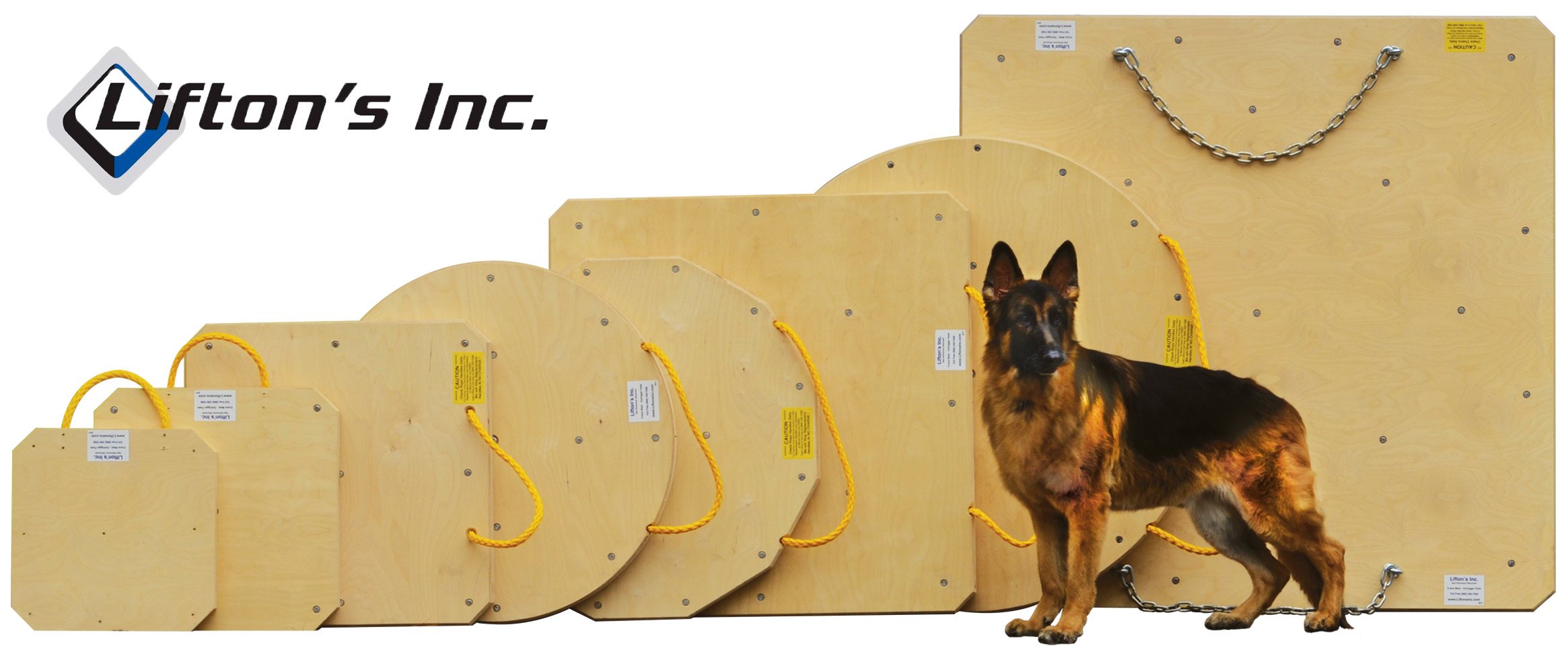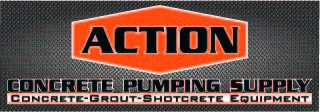Possible Problems and Some Solutions
Electrical failures
As we do our job each day, we often forget how many things that all have to work together to make our pump operate. The machines we are running these days are so much more sophisticated and dependable than they were 25 years ago that some of the younger pumpers would never believe the hell we had with the equipment back then. There is much to learn and coming from the caveman days of concrete pumps, I will tell you of some possible problems and some of the many solutions so that you can be as dependable as your pump. We all will experience some kind of a failure, sooner or later. We may go along for months or even years before it happens so we had better be ready.
First we will need tools. Here is a list of the minimum that should be on every pump. You cannot fix anything without tools. The days of wire and gray tape are over guys; we are dealing with equipment every bit as complex and delicate as the computer that you are using. Even the basic truck systems are controlled now and you simply cannot go around beating on the components expecting to make it work!
You should have a complete set of open-ended wrenches; most are supplied with a new pump. Size from 6mm to 38mm or there about, big as any hose on the machine.
A complete set of Allen wrenches. These range from 2.5mm to 20mm or bigger.
Screwdrivers, blade and Phillips, several sizes of each.
Pliers and channel locks, and vise grips.
A punch
A chisel or two
Teflon tape
Black tape
Alligator clips with jumper wire
1 roll of 14 gauge wire, at least 20’ long
1 roll of 18 gauge wire, at least 20’ long
An electrical connector kit
Crimp tool
Test light
The last 7 items are what we will be interested in today. We will look at electrical failures and how to keep your machine running when the juice stops. We will take a look at the complex and delicate systems that supply power to the basic operating systems and how to at least save the boom and hopefully finish a pour.
First of all, there is no way that I can detail everything as all manufacturers have different systems. Some require power to turn a pump on; others need power to turn it off. The newer pumps will have computer controls that can only be fixed by replacing a card or module. We can however make sure that the power supply to the system is there allowing the computer to do its job. A computer now runs both the pump and the boom. There are safety relays in almost every part of the truck/pump system.
Your test light will be useless to diagnose a computer problem but can be used to tell you that the problem is in the computer. When experiencing a failure, first check the fuses of the affected system. They will be located all over the machine. In the cab main fuse block, in the pump control panel and possibly along the frame as an in-line fuse especially for heavy draw items like vibrators and night-lights. The easiest way to find a short (a fuse blowing) is to trace the wire. Often you will see a place where the wire has rubbed along the frame somewhere or has been melted by a heat source and grounded. Water can also do its share of damage to an electrical system with the solid state components. Corrosion is everywhere, the constant exposure to the elements and the deadliest thing of all, the steam cleaner. I have seen many machine downed by a good bath! When searching for a short, use some common sense. Look at the places where the wires are exposed. Follow them and observe the condition of the insulation. If the vibrator fails, follow the wire back to the battery, I can assure you that you will find a bad switch or a connection that has been corroded and not making contact any longer. Test the switch and/or plugs. Ground the test light and probe the terminals. You will either find power or not. With a good fuse and you know that there is power at the fuse block; work your way toward the non-working item. Wiggle the wire as you go sometimes corrosion gets inside the wire where it cannot be seen and rots the wire itself. You will find the problem by tracing the circuit. If you have a failure of the pump circuit and it is an older machine with no computer control, you can easily fix this. Is there power at the fuse block? One side is hot (bar side) and the other is divided into all the different circuits. No power here? Get the heavier gauge wire and run a link from the battery to the fuse block. You are supplying a new route for the power to travel. Always go through the fuse block to avoid those annoying little electrical fires. Wires all look the same when the have burned! Routing a jumper wire to the block should solve the problem, however it is NOT FIXED, it is just an emergency repair, enough to finish a pour. Undo the repair when done pumping so it will not short again. You must find the original problem before leaving any repair to stay. All pumps can be operated manually to make them cycle or fold up, it’s just very difficult on some models to be in two places at once to run the boom and also run the pump. A fix of one or the other is required. When certain components fail, there is little that can be done on the job. A solenoid can only be fixed by a new solenoid as a new card can only fix a computer card. Some companies allow the machines to carry spare power cards but many do not because of the expense of stocking a part that may not ever fail. If you do have a card failure, and no replacement, it will be difficult to jump the system without causing more damage. These systems operate on precise power levels and millivolts. A good 12-volt jolt is enough to fry a nice computer. remember that. It cost thousands of dollars to replace. We are only interested in jumping the non-computer items. Your truck will have a solenoid in the cab somewhere that supplies power to the pump unit. This can go out also, killing everything behind the cab. Even the parking brake has a relay that will not allow power to the pump unless it is engaged. Know where these things are so that when it does happen, you can at least look for the obvious faults. Hopefully you will be in contact with your shop and a technician who will want you to be his eyes and hands. Again, familiarize yourself with the location of all these parts. With mud in the boom and several trucks waiting growing old, you cannot afford the time to hunt down these things. The biggest part of dealing with a power failure is evaluating the seriousness. Can it be jumped? If so, where is the fuse block? Where do I find power? Where do I apply the new power source? Know all these things before they fail. Again, if your machine is computer controlled, and a new fuse won’t fix it, your only hope is to find the source of the short. You cannot jump a computer. You can fix the broken circuit that supplies power there if it is a bad wire or connection. Trace the wire and probe the connections with the test light. It will tell you what is dead and what is hot. Knowing this will point you in the right direction to look for a shorted wire or corroded connection.
If your alternator fails and your pump starts running out of power, remember that many have an electric fuel shut off that will close when there is no more juice in the battery. It will die and it will not restart with a jump for awhile until the battery has picked up sufficient charge. What you can do is to get a set of jumper cables and hook up to anything that has a 12 or 24 volt system, the same as yours to help supply power to your batteries where your machine is looking for the power. Be sure of the battery size and how to hook up. You can use a 12-volt tractor to help a 24-volt system but it will be only a little help. Do not hook try to charge a 12V system with a 24V charge. Check with your shop to show you how and where to hook up cables in such an emergency. I have pumped all day with a forklift supplying me with energy. A low battery will not only kill the engine but won’t allow the solenoids to all work on the boom and sometimes the pump. You will know when it is low, it will stop working well, and maybe only 1 function at time will work. Carry spare belts also. Many a pour has failed because of a broken $10 belt. They are fairly easy to change and a poor excuse for failing a pour. Easy to store too.
If you need to run a jumper wire to the pump fuse panel, have some good wire to do this. It should be heavy enough to handle the load of the pump and boom. I once ran a short piece of speaker wire from a tail light socket up to the panel and hooked it to the fuse block bar side. Only had about 5’ of wire so the lights were the closest place to find power. The machine does not care where it comes from as long as it is there. Like showing up for work. I even used bubble gum to hold the wire in the socket to the positive spot. My operations manager came out and saw what I had done and was fairly amazed. With a little ingenuity, you can solve most of these problems with what is on hand. It is nice to have what you need to do a good fix without having to cannibalize some finisher’s car stereo!
All the electrical on a pump is the same basically. You can trace shorts in the lights the same way. Probing the wire, following it to source and checking fuses. Always have a collection of the CORRECT size fuses on hand. Don’t think that installing a 30 amp in a 15 amp will fix it. All this is doing is allowing more energy to build before blowing the bigger fuse. Often the wire or a component will melt down before the bigger fuse does. Then you have a real problem, even a fire. In an emergency, and I don’t recommend this, but I have used the blown fuse when I had nothing else and wrapped it in a tiny piece of paper from a cigarette pack to complete a circuit. This is not as heavy as foil or wire and has a chance of blowing like a fuse. Don’t wrap it completely, just enough to complete the circuit. Again, I am not telling you this is OK, but it has worked for me when nothing else was available. Undo this as soon as possible. It is not safe or dependable. It is only a very cheap patch. Have the correct things on hand for this. Doing more damage to the pump will only keep you from working and it will keep you from being the best among your company. Always treat the machine like you were making the payments. It will be much better maintained that way.
The thing to remember is to know the machine. Know where the places are that you will be interested in for such an emergency repair. Have the stuff you need. You can solve any problem on site with some training and the desire to solve said problems. Talk with your shop and get the information. It will come in handy sooner or later.
For all those with computer-controlled pumps and booms, prevention is as important as anything is. Keep the system clean and dry. Don’t spray the box that houses the delicate parts. Keep an eye out for corrosion in plugs and on connections. If you do experience a computer failure, not a power failure, only parts will fix it. Know how to do it all manually so you can keep pumping until help arrives or so you can clean up without any more problems. The whole point of the newer systems is reliability and they are very much so. However, anything can and will fail eventually, be prepared to deal with it. Knowledge is power and the more that you know the more power that you have to save your machine and a pour. These things never happen in the yard, only when you have someone's concrete in them. Be ready to solve the problem. Be the best.
Written By Horton, Lee Published by ConcretePumping.com




















.jpg)
.gif)

.jpg)








.jpg)









